Australian Braunvieh Beef Cattle
About Braunvieh Beef Cattle
History
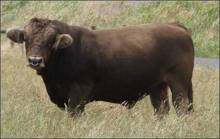
The history of the Braunvieh breed of cattle goes back to the central European countries of Germany, Austria and Switzerland. These adjoining mountainous areas developed the Braunvieh as a pure breed for many centuries.
Their origin goes back to short horned cattle of neolithic marsh type, sometimes referred to as the Auroch. Braunvieh could be regarded as one of the oldest pure breeds of cattle in the world. According to records made by monasteries and local government guilds, Braunvieh have been kept homogenous for nearly 1000 years.
The earliest records are found in stock lists and agricultural ordinances of the monastic foundations of Einsiedeln, Engelberg, Muri and St Gall, dating from the 9th and 10th centuries. The monasteries levied taxes from their vassals in the form of cattle and dairy products.
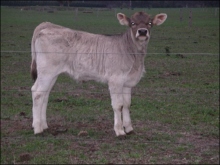
However, the cattle were not only intended to provide sustenance for the monks, but began to be bartered for grain, salt and other necessaries. Consequently many documents survived from the 14th to 18th century which bear witness to a brisk trade in cattle by the founding cantons in Eastern Switzerland with neighboring countries.
The period from 1750 to 1850 may be regarded as the heyday of the cattle trade with Northern Italy over the St Gotthard Pass. The earliest legal provisions governing the promotion of cattle breeding in the various cantons also date from this time. Distinctions were still being made between various local types of Braunvieh, such as Schwyzer, Einsiedler, Toggenburger, Walliser, Appenzeller and Haslitaler. Between 1869 and 1880, a number were exported to the USA. With selection, these became the dairy Brown Swiss.
Their characteristics in form and productivity established Braunvieh as an article much in demand for export and barter by the medieval alpine farmers of central Switzerland.
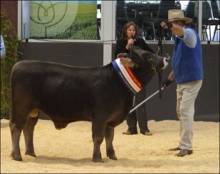
The name Braunvieh means 'Brown cow'. In Switzerland it was formerly known as the Schwyzer breed, after the canton of Schwyz which was their most important breeding area. The comprehensive breed name was not adopted until 1880, when the Confederation introduced its first promotional measures.
In 1887 the first Braunvieh breeding cooperative was founded. Ten years later, in 1897, the first 82 breeding cooperatives came together in the Swiss Braunvieh Breeders Association. From this time on, national bull markets were held every year. This led to lively trading between the various breeding areas, and thus to a unification of the breed. Artificial Insemination was introduced in 1961.
The natural environment in the Swiss breeding areas vary greatly, with approximately one third situated in the so-called Plateau or Mittleland between the Jura and the Alps, averaging an altitude of 650 to 2000 ft. The remaining district at 2000 to 6500 ft, as pre-alpine and alpine region, represents the actual breeding zone for Braunvieh. The summer pastures are situated between 3300 and 9000 ft, with constantly changing weather conditions to adapt to.
Breed Characteristics
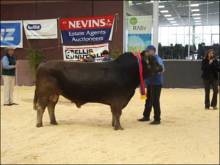
Some physical characteristics of Braunvieh include moderate sized, well muscled cattle of quiet temperament. Cows have a mature weight of 550 to 750 kg and bulls from 950 to 1250 kg.
Their colour is light grey to mid brown, with bulls darker than females but with a distinctive white muzzle. Strong maternal traits place it high for milk production in comparison to other European breeds.
With a long background of selection, Braunvieh have established production of meat and milk with high feed efficiency. This has become very evident in present day scientific comparisons and feedlot experience.
Distribution
Other than its homelands of Germany, Austria, Italy and Switzerland, Braunvieh have spread into all continents except the Poles. Extraordinary adaptability has put Braunvieh in countries such as South Africa, India, Canada, Japan, Yugoslavia, Mexico, France, Russia and all climatic zones of North and South America. With over 7,000,000 Braunvieh in 60 countries, there are now herdbook records in 42 countries.
Braunvieh Beef Cattle in Australia
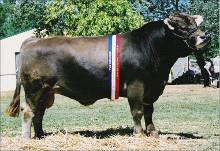
In 1972 when the import bans were lifted, many European breeds were introduced including Braunvieh. Breeding records since 1975 using an Up-grading program with Braunvieh semen over four crosses to Purebred resulted in the first Purebred born in 1984.
The first live cattle entered in June 1989 from New Zealand, with Fullblood Swiss Braunvieh entering in April 1990. Subsequent importation of cattle and embryos from Denmark and Canada and semen and embryos from US and Switzerland have greatly expanded Braunvieh in Australia.
With Braunvieh becoming readily available, commercial cattle breeders are using them over black and grey cows in the south, and over Brahman in the north. Braunvieh crossed with Brahman is known as Braunbra. The Braunvieh muscle, feed efficiency and maternal traits have a positive benefit in all these different applications.
This history of Braunvieh was compiled for the ABA Inc from extracts of Swiss Braunvieh Zuchtverband, O Gruter and Dr W Engeler.
More Information about Australian Braunvieh Cattle
For further information, contact the following:
President - Daniel Mudford
Email: allameade@gmail.com
Phone: 0428 171 094
Secretary - Andy Rainsford
Email: koijakajr@gmail.com
Phone: 0424 000 337
